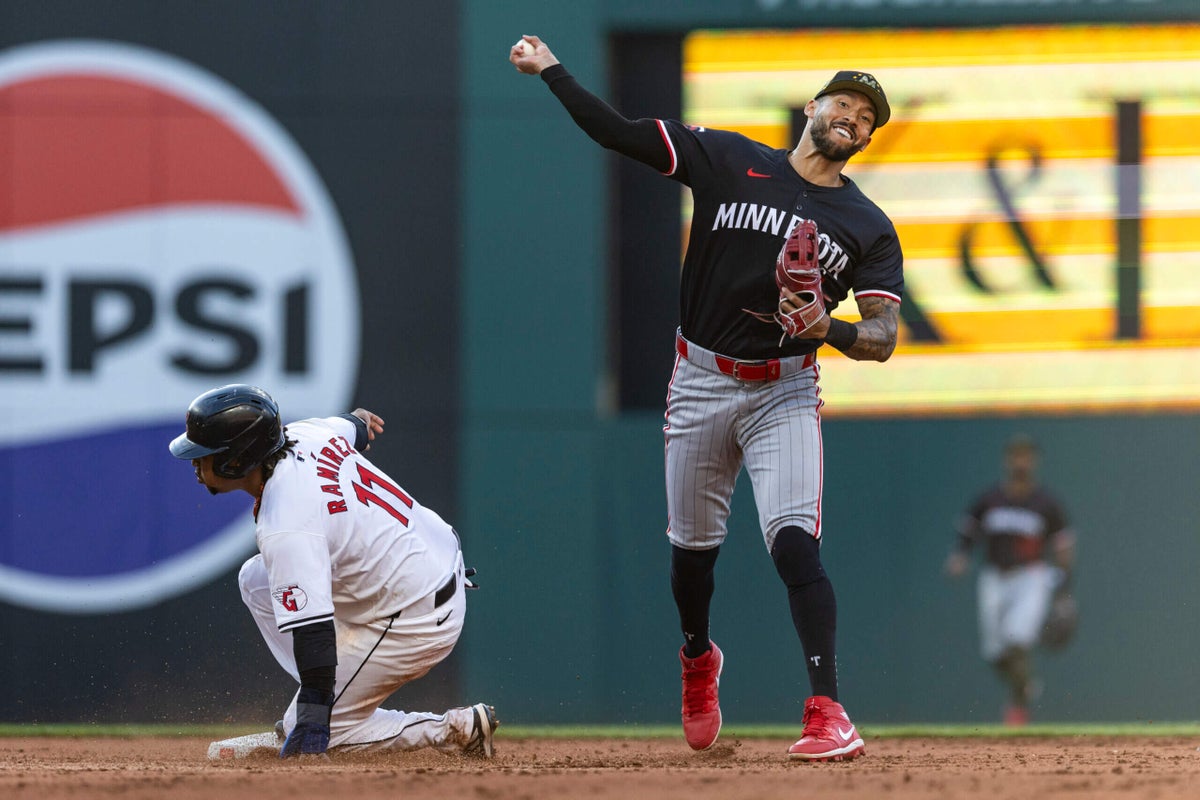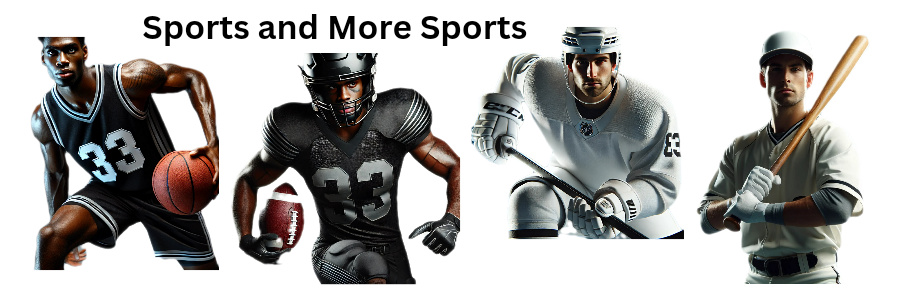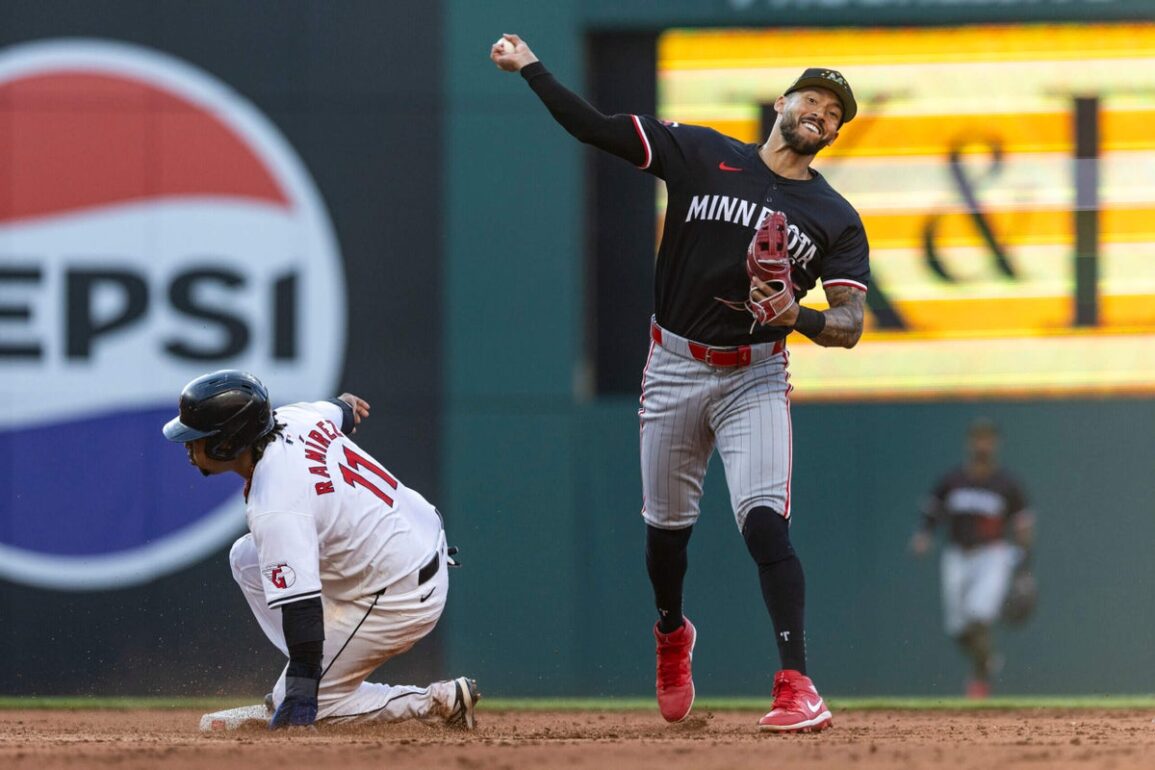
Major League Baseball has made two on-field rule changes for 2025, both attempting to avoid rare instances where the old rules could have incentivized teams to try to game the system, The Athletic has learned. The 11-person competition committee unanimously passed both on Tuesday.
The most significant change is a stiffened penalty for a fielder who violates the infield shift rule and also is the first to touch the ball.
Advertisement
The league’s ban on the shift prevents teams from stacking more than two infielders on either side of second base before the pitch is delivered. Typically, that means a shortstop has to stay on the left side, and a second baseman the right. Both times teams were caught breaking that rule in 2024, a shortstop had ranged too close to second base — and was also the first to touch the ball in play.
If that happens going forward, the batter is newly to be granted first base and any runners would advance one base. The fielder would be charged an error, while the batter would not register an at-bat. The offense could also decline that penalty and take the result of the play.
Previously, the only recourse for a shift violation — regardless of who touched the ball first — was the choice between accepting the result of the play, or an automatic ball for the batter. That created a potential scenario where a team might feel it wiser to position a fielder in violation of the rule and risk the potential of a ball.
The other rule change is more arcane, but allows replay officials to check whether a runner arriving at second or third base overran the bag in a situation where they previously had to ignore that matter.
Say runners are on first and third base with two out, and a ground ball is hit on the infield. The runner on first base might try to run as hard as possible, through and past second base toward the outfield, to beat an incoming throw, and allow the runner on third to score.
The runner is initially ruled out at second, but on review, umpires find the runner beat the throw. In the past, umpires would be required to put the runner back on second without considering what happened immediately after — that he went past the bag, committing what’s already in the rule book as “abandonment.”
Advertisement
Going forward, the replay official can call the runner safe on the force play, but then out for abandonment. And whether the run coming home from third scores depends on when he’s ruled to have actually abandoned the bag.
The change should deter runners from trying to run past second or third base in situations where they might perceive it beneficial.
“If a runner runs second base or third base on a potential force play and does not attempt to hold the base or advance to the next base, the runner will be called out for abandonment,” read a presentation MLB put together for the competition committee that was obtained by The Athletic. “If a runner scores from third during the play, Replay will judge whether he touched the plate prior to the time when the abandoning runner passed the base (i.e., when his second foot touches the ground on the other side of the bag).”
The first shift violation in 2024 was called on May 17 on Minnesota Twins shortstop Carlos Correa at a game against the Guardians in Cleveland. José Ramírez was batting with a runner on first and one out when Correa started the play slightly behind the second base bag. Ramírez hit a one-hopper that took Correa to his right when he threw on to first.
Cleveland challenged the play, and umpires found Correa had indeed violated the rule. He returned to the plate. In the new scenario, he could have taken first base.
The second shift violation of 2024 was called on Ceddanne Rafaela of the Boston Red Sox on May 20, in the second inning on the road vs. the Tampa Bay Rays. The shortstop started the play almost directly behind the second base bag, at the far edge of the dirt, and then ranged to his right on a sharp ground ball up the middle. He made what was otherwise quite a play, diving to his right and then throwing on to first in time to get Jonathan Aranda.
The league’s competition committee is made up of six MLB appointees, four from the players’ side and one from the umpires.
(Photo of Ramírez and Correa from the May 2024 series: Lauren Leigh Bacho / Getty Images)
This post was originally published on this site be sure to check out more of their content.







